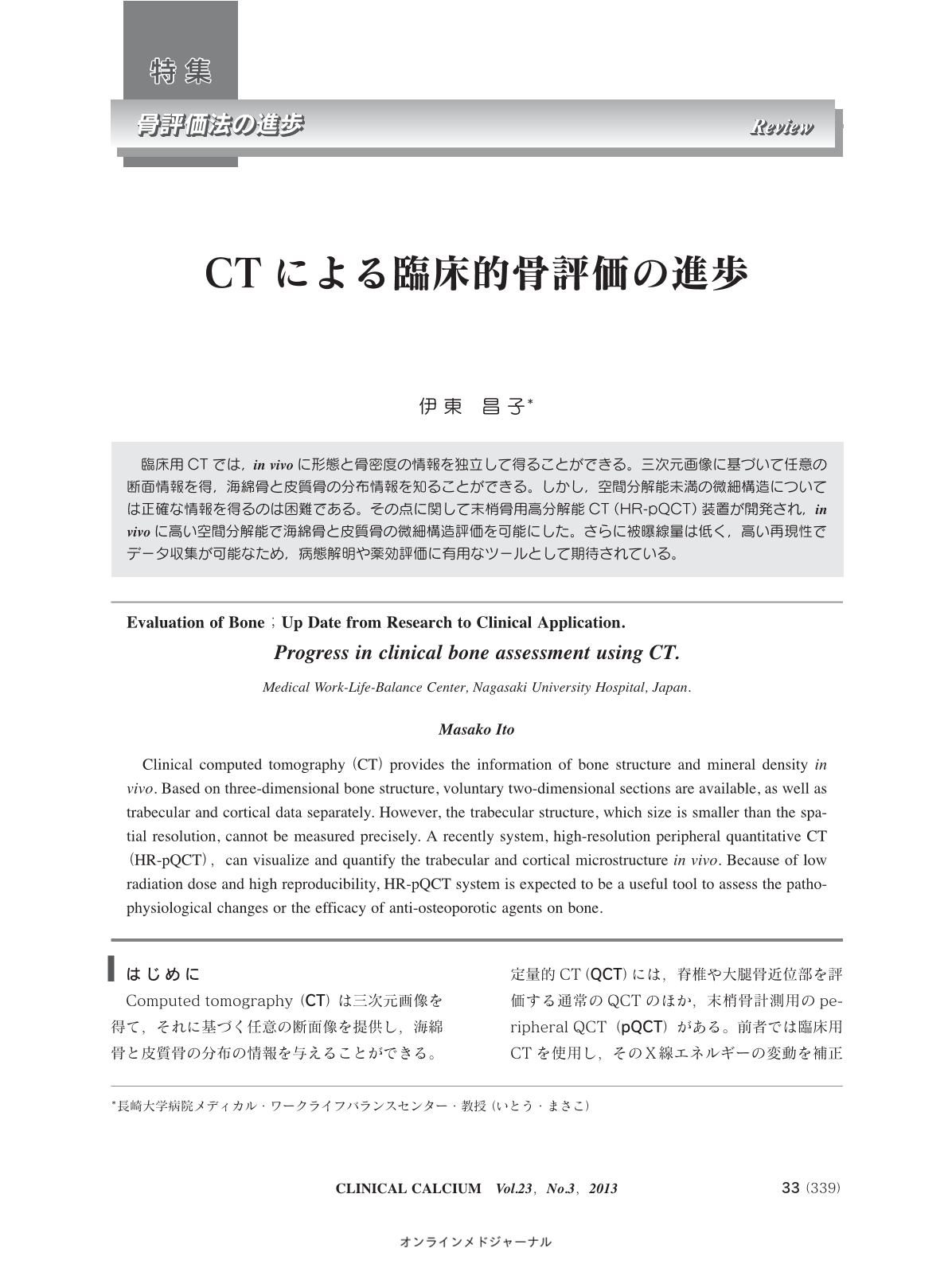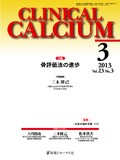Japanese
English
- 有料閲覧
- Abstract 文献概要
- 1ページ目 Look Inside
- 参考文献 Reference
臨床用CTでは,in vivoに形態と骨密度の情報を独立して得ることができる。三次元画像に基づいて任意の断面情報を得,海綿骨と皮質骨の分布情報を知ることができる。しかし,空間分解能未満の微細構造については正確な情報を得るのは困難である。その点に関して末梢骨用高分解能CT(HR-pQCT)装置が開発され,in vivoに高い空間分解能で海綿骨と皮質骨の微細構造評価を可能にした。さらに被曝線量は低く,高い再現性でデータ収集が可能なため,病態解明や薬効評価に有用なツールとして期待されている。
Clinical computed tomography(CT)provides the information of bone structure and mineral density in vivo. Based on three-dimensional bone structure, voluntary two-dimensional sections are available, as well as trabecular and cortical data separately. However, the trabecular structure, which size is smaller than the spatial resolution, cannot be measured precisely. A recently system, high-resolution peripheral quantitative CT(HR-pQCT),can visualize and quantify the trabecular and cortical microstructure in vivo. Because of low radiation dose and high reproducibility, HR-pQCT system is expected to be a useful tool to assess the pathophysiological changes or the efficacy of anti-osteoporotic agents on bone.



